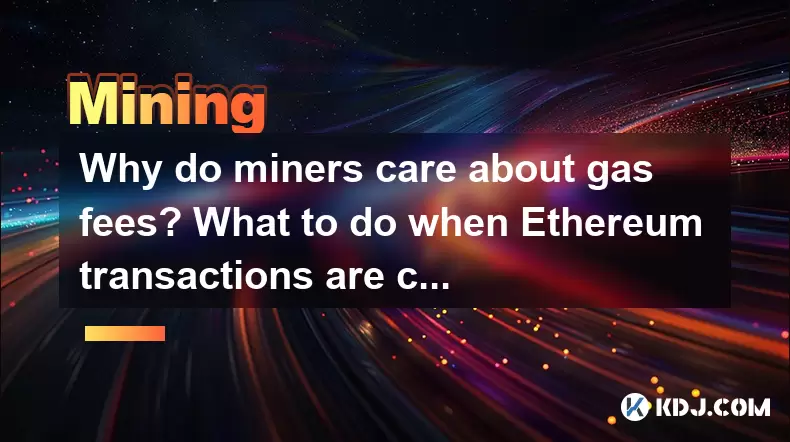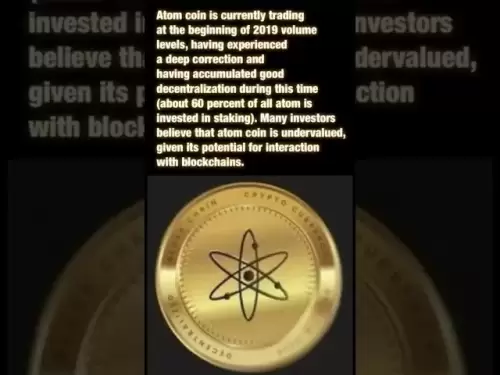-
 Bitcoin
Bitcoin $115200
-2.68% -
 Ethereum
Ethereum $3601
-5.16% -
 XRP
XRP $3.035
-2.96% -
 Tether USDt
Tether USDt $0.9997
-0.04% -
 BNB
BNB $764.5
-5.43% -
 Solana
Solana $168.1
-5.92% -
 USDC
USDC $0.9998
-0.02% -
 Dogecoin
Dogecoin $0.2090
-4.80% -
 TRON
TRON $0.3272
-0.49% -
 Cardano
Cardano $0.7306
-5.00% -
 Hyperliquid
Hyperliquid $39.16
-12.22% -
 Stellar
Stellar $0.3967
-4.96% -
 Sui
Sui $3.566
-5.95% -
 Chainlink
Chainlink $16.55
-6.57% -
 Bitcoin Cash
Bitcoin Cash $552.3
-3.90% -
 Hedera
Hedera $0.2516
-4.69% -
 Avalanche
Avalanche $21.99
-5.75% -
 Toncoin
Toncoin $3.621
-0.28% -
 Ethena USDe
Ethena USDe $1.000
-0.03% -
 UNUS SED LEO
UNUS SED LEO $8.951
0.02% -
 Litecoin
Litecoin $105.9
-3.59% -
 Shiba Inu
Shiba Inu $0.00001232
-5.00% -
 Polkadot
Polkadot $3.640
-5.55% -
 Uniswap
Uniswap $9.048
-7.03% -
 Monero
Monero $301.8
-1.51% -
 Dai
Dai $0.9999
-0.01% -
 Bitget Token
Bitget Token $4.334
-3.66% -
 Pepe
Pepe $0.00001064
-6.17% -
 Cronos
Cronos $0.1367
-5.78% -
 Aave
Aave $259.2
-4.59%
Why do miners care about gas fees? What to do when Ethereum transactions are congested?
Gas fees are vital for miners' revenue on Ethereum, with higher fees prioritized during network congestion to ensure faster transaction processing.
May 10, 2025 at 07:00 pm

Understanding Gas Fees and Their Importance to Miners
Gas fees are a crucial element in the Ethereum blockchain, serving as the payment mechanism for the computational effort required to process transactions and execute smart contracts. For miners, these fees represent a significant source of revenue. When users submit transactions, they specify a gas price, which is the amount they are willing to pay per unit of gas. Miners prioritize transactions with higher gas fees because they can maximize their earnings by including these transactions in the blocks they mine.
The revenue model for miners is directly tied to gas fees. Miners earn block rewards, which are fixed amounts of cryptocurrency awarded for successfully mining a block, but they also collect the total gas fees from all transactions included in that block. As the block reward diminishes over time, gas fees become an increasingly important component of a miner's income. This dynamic incentivizes miners to optimize their operations to include as many high-fee transactions as possible, thereby increasing their profitability.
The Role of Gas Fees in Network Congestion
When the Ethereum network experiences high demand, such as during periods of intense trading or popular decentralized application (dApp) usage, the network can become congested. This congestion leads to an increase in gas fees as users compete to have their transactions processed quickly. Miners play a pivotal role in this scenario, as they have the power to choose which transactions to include in the next block based on the offered gas fees.
During times of congestion, miners prioritize transactions with higher gas fees, which can lead to slower processing times for transactions with lower fees. This creates a situation where users must decide whether to pay a higher fee to ensure their transaction is processed promptly or wait longer for a lower fee. The balance between speed and cost becomes a critical consideration for users, while miners benefit from the increased fees during these periods.
Strategies for Managing Ethereum Transaction Congestion
When faced with Ethereum transaction congestion, users have several strategies at their disposal to manage the situation effectively. One approach is to adjust the gas price of their transaction. By setting a higher gas price, users can increase the likelihood that miners will include their transaction in the next block, thus reducing wait times.
Another strategy involves using tools like gas price estimators, which provide real-time data on the current gas prices and suggest optimal amounts based on network conditions. These tools can help users find a balance between cost and speed. Additionally, some wallets and dApps offer features that automatically adjust gas prices based on current network congestion, simplifying the process for users.
For those willing to wait, setting a lower gas price and allowing the transaction to be processed when network demand decreases can be a cost-effective option. However, this approach requires patience and an understanding of the potential for longer wait times.
Practical Steps to Handle Congestion
When dealing with Ethereum transaction congestion, users can take the following practical steps:
- Check Current Gas Prices: Use a gas price estimator tool to get the latest information on gas prices. Websites like EthGasStation or tools integrated into wallets like MetaMask can provide this data.
- Adjust Gas Price: If speed is a priority, increase the gas price to a level that ensures prompt processing. Conversely, if cost is more important, set a lower gas price and be prepared to wait.
- Monitor Transaction Status: Use blockchain explorers like Etherscan to track the status of your transaction. This can help you understand if your transaction is stuck due to low gas prices or if it's simply taking longer due to network congestion.
- Consider Layer 2 Solutions: For frequent transactions, consider using Layer 2 scaling solutions like Optimism or Arbitrum, which can offer faster and cheaper transactions during times of high network congestion.
The Impact of Gas Fees on Network Security
Gas fees not only affect miners' revenue but also play a role in the security of the Ethereum network. Higher gas fees can deter malicious actors from launching denial-of-service (DoS) attacks, as the cost of executing such attacks increases. Miners, in turn, benefit from a more secure network, as it attracts more users and increases the overall value of the Ethereum ecosystem.
The security aspect is particularly important during periods of high congestion. If gas fees are too low, the network becomes vulnerable to spam transactions that could clog the network and slow down legitimate transactions. By prioritizing transactions with higher gas fees, miners help maintain the network's efficiency and security, ensuring that the Ethereum blockchain remains a reliable platform for users.
Frequently Asked Questions
Q: How do miners determine which transactions to include in a block?
A: Miners typically use algorithms that prioritize transactions based on the gas price offered. Transactions with higher gas prices are more likely to be included in the next block because they offer greater revenue to the miner. Additionally, miners may consider factors like transaction size and the sender's reputation, although gas price remains the primary determinant.
Q: Can miners manipulate gas fees to their advantage?
A: While miners cannot directly manipulate gas fees, they can influence the market by choosing which transactions to include in blocks. By consistently prioritizing transactions with higher gas fees, miners can indirectly encourage users to offer higher fees, thereby increasing their potential earnings. However, this practice must be balanced with the need to maintain a healthy and user-friendly network.
Q: What are the risks of setting a very high gas fee during congestion?
A: Setting a very high gas fee can ensure that a transaction is processed quickly during congestion, but it also comes with risks. If the network congestion subsides before the transaction is processed, the user may end up paying more than necessary. Additionally, if the transaction fails for any reason, the user will not be refunded the gas fee, leading to potential financial loss.
Q: How do gas fees affect the overall usability of Ethereum?
A: Gas fees can significantly impact the usability of Ethereum, particularly during times of high congestion. High fees can deter users from making frequent or small transactions, limiting the platform's appeal for certain use cases. Conversely, well-managed gas fees can enhance usability by ensuring that transactions are processed efficiently and cost-effectively, making Ethereum more accessible to a broader range of users.
Disclaimer:info@kdj.com
The information provided is not trading advice. kdj.com does not assume any responsibility for any investments made based on the information provided in this article. Cryptocurrencies are highly volatile and it is highly recommended that you invest with caution after thorough research!
If you believe that the content used on this website infringes your copyright, please contact us immediately (info@kdj.com) and we will delete it promptly.
- Dogecoin's Price Support Under Fire: Can It Fend Off Competitors?
- 2025-08-02 04:30:12
- AI Cloud Mining: How AIXA Miners is Empowering Young Investors
- 2025-08-02 04:30:12
- Crypto Spotlight: Rollblock's Rise, Ripple's Resistance, and What It Means for Your Portfolio
- 2025-08-02 04:50:12
- Crypto's Golden Age: Tether Gold, Institutional BTC, and the Future of Finance
- 2025-08-02 04:50:12
- VeChain, Unilabs, XRP: Decoding August's Crypto Moves
- 2025-08-02 04:55:43
- Bitcoin, Whales, and Profit: Decoding Crypto's Latest Moves
- 2025-08-02 04:55:43
Related knowledge

What was the highest APY for IRON mining?
Jul 23,2025 at 05:14am
Understanding IRON Token and Its Mining MechanismThe IRON token is a stablecoin that operates within the Iron Finance ecosystem, primarily on blockcha...

What is impermanent loss in IRON pools?
Jul 23,2025 at 09:00am
Understanding Impermanent Loss in the Context of IRON PoolsImpermanent loss is a phenomenon that affects liquidity providers in decentralized finance ...

How to claim rewards from IRON mining?
Jul 23,2025 at 02:21pm
Understanding IRON Mining and Reward MechanismsIRON Finance operated as a decentralized finance (DeFi) protocol on the Polygon and Binance Smart Chain...

How to claim rewards from IRON mining?
Jul 29,2025 at 05:07am
Understanding IRON Mining and Reward MechanismIRON is a dual-token system designed to stabilize the value of a synthetic asset through a combination o...

IRON mining tutorial for beginners
Jul 27,2025 at 12:01am
What Is IRON and How Does It Work in the Cryptocurrency Ecosystem?IRON is a cryptocurrency token that operates on the Binance Smart Chain (BSC) and is...

How to calculate APY for IRON mining?
Jul 28,2025 at 09:49am
Understanding APY in the Context of IRON Token MiningWhen engaging in IRON token mining within decentralized finance (DeFi) platforms, Annual Percenta...

What was the highest APY for IRON mining?
Jul 23,2025 at 05:14am
Understanding IRON Token and Its Mining MechanismThe IRON token is a stablecoin that operates within the Iron Finance ecosystem, primarily on blockcha...

What is impermanent loss in IRON pools?
Jul 23,2025 at 09:00am
Understanding Impermanent Loss in the Context of IRON PoolsImpermanent loss is a phenomenon that affects liquidity providers in decentralized finance ...

How to claim rewards from IRON mining?
Jul 23,2025 at 02:21pm
Understanding IRON Mining and Reward MechanismsIRON Finance operated as a decentralized finance (DeFi) protocol on the Polygon and Binance Smart Chain...

How to claim rewards from IRON mining?
Jul 29,2025 at 05:07am
Understanding IRON Mining and Reward MechanismIRON is a dual-token system designed to stabilize the value of a synthetic asset through a combination o...

IRON mining tutorial for beginners
Jul 27,2025 at 12:01am
What Is IRON and How Does It Work in the Cryptocurrency Ecosystem?IRON is a cryptocurrency token that operates on the Binance Smart Chain (BSC) and is...

How to calculate APY for IRON mining?
Jul 28,2025 at 09:49am
Understanding APY in the Context of IRON Token MiningWhen engaging in IRON token mining within decentralized finance (DeFi) platforms, Annual Percenta...
See all articles

























































































